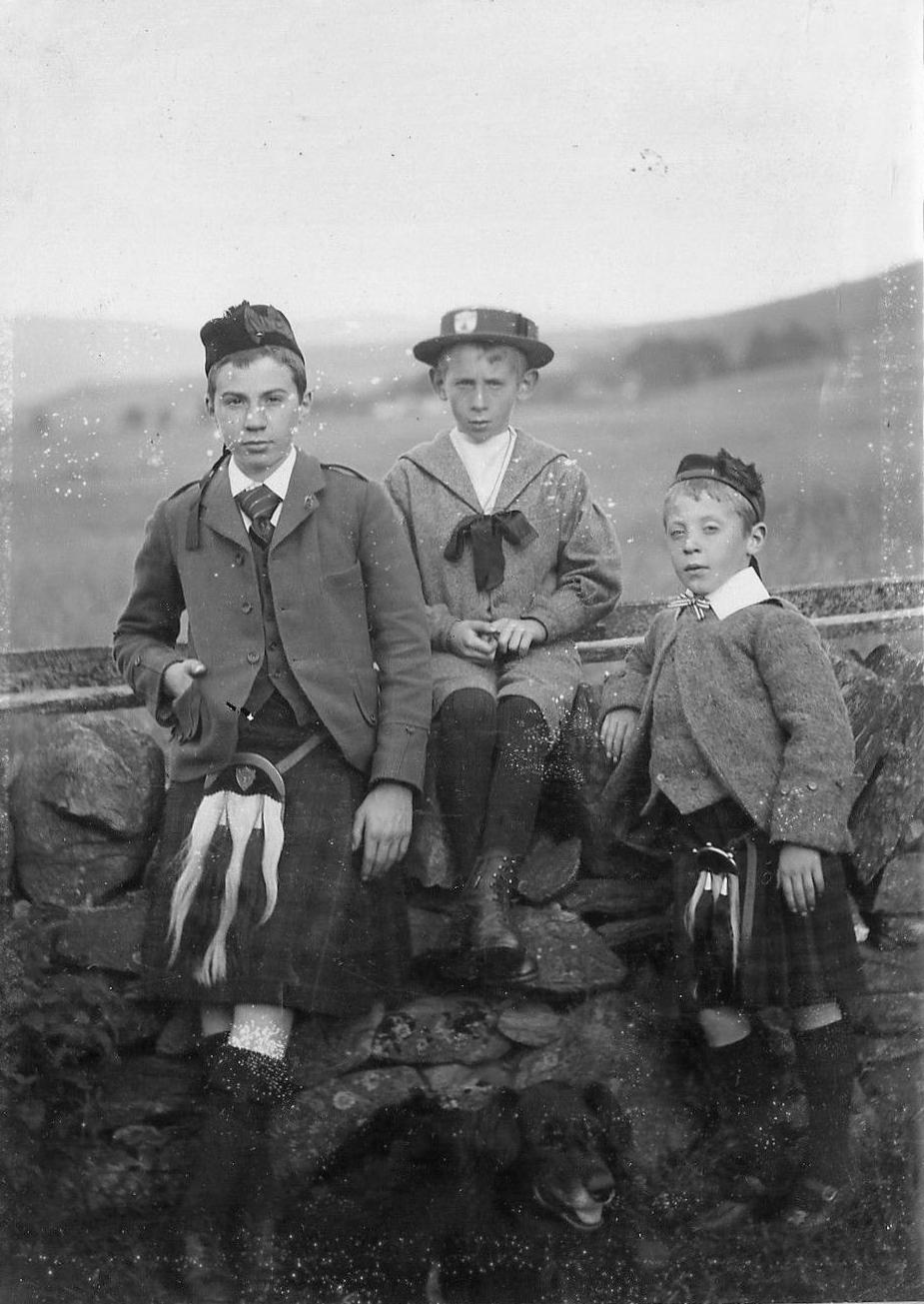
Scottish Regions: The Highlands

Figure 1.-- This cabinet card portrait shows three unidentified childre. This usually means a family group. The noys look to be bout 6-14 years old. Two noys wears Highland kilts with mstching Glengsries and sporans. The jackets are different, but ge ppropriate, The middle boy wears a silor suit with what looks like a school boater. We are not entirely sure why all three boys are dressed in kilt outfits. We portrait is also undated, but we would guess was taken in the 1890s. Unlike most cabinet cards, there is no studio information, but was probanly taken in the Highlands which the background suggesrs. The clothing suggests the boys came from a well-to-do family. Notice the great pooch.
|
|
The Highlands are surely in the public imagination surely seen as the a romantic region of Scotland. This is true both in history and landscape. Much of the most iconic Scottish historical events took place in the Highlands. And the unspoilt nature neauty of the Higlands with the rugged mountains, deep blue lochs, and largely empty glens are stunning. Majestic Red Deer still rule the landscpe hills and Eagles populate the skies. The weather can be stunning as well, especially how rapidly itcan change. On a sunny day you see the hills, than suddenly they are gone shroded by clouds and mist. The Highlands are the more traditional northern area of Scotland. The Highlands became culturally distinguishable from the Lowlands from the later Middle Ages as England began to increasingly impact the Lowlands. Mostlt notably, the Lowland Scots began replacing Gaelic with English. Gaelic persisted in the Higland into the modern era. The Highland tribes were the center of resistance to English domination. It is the Highlands that most people imagine when they think of Scotland. The Scotts are an ethnic an cultural blend. In the erly medieval cotland was created by the blending of the Gaels and other peoples, especially the Picts. The dividing line was everything west from the Great Glen (Inverness to Loch Lynnhe and the islands) and something like 50 miles east of the Great Glen. This geographic line of course still exists and there are still cultural differences.
HBC

Navigate the Boys' Historical Clothing Website:
[Return to the Main Scottish regional page]
[Return to the Main Scottish page]
[Introduction]
[Activities]
[Biographies]
[Chronology]
[Clothing styles]
[Countries]
[Bibliographies]
[Contributions]
[FAQs]
[Glossaries]
[Images]
[Links]
[Registration]
[Tools]
[Boys' Clothing Home]
Navigate the Boys' Historical Clothing kilt pages:
[Main kilt page]
[Kilt suits]
[Scottish kilts]
[Scottish boys clothing]
[Scottish school uniform]
[Highland dance]
[Pipeband]
[Irish kilts]
[Irish boys clothing]
[Irish step dancing]
[Greek kilts]
Created: 8:36 AM 7/9/2016
Last updated: 8:37 AM 7/9/2016



